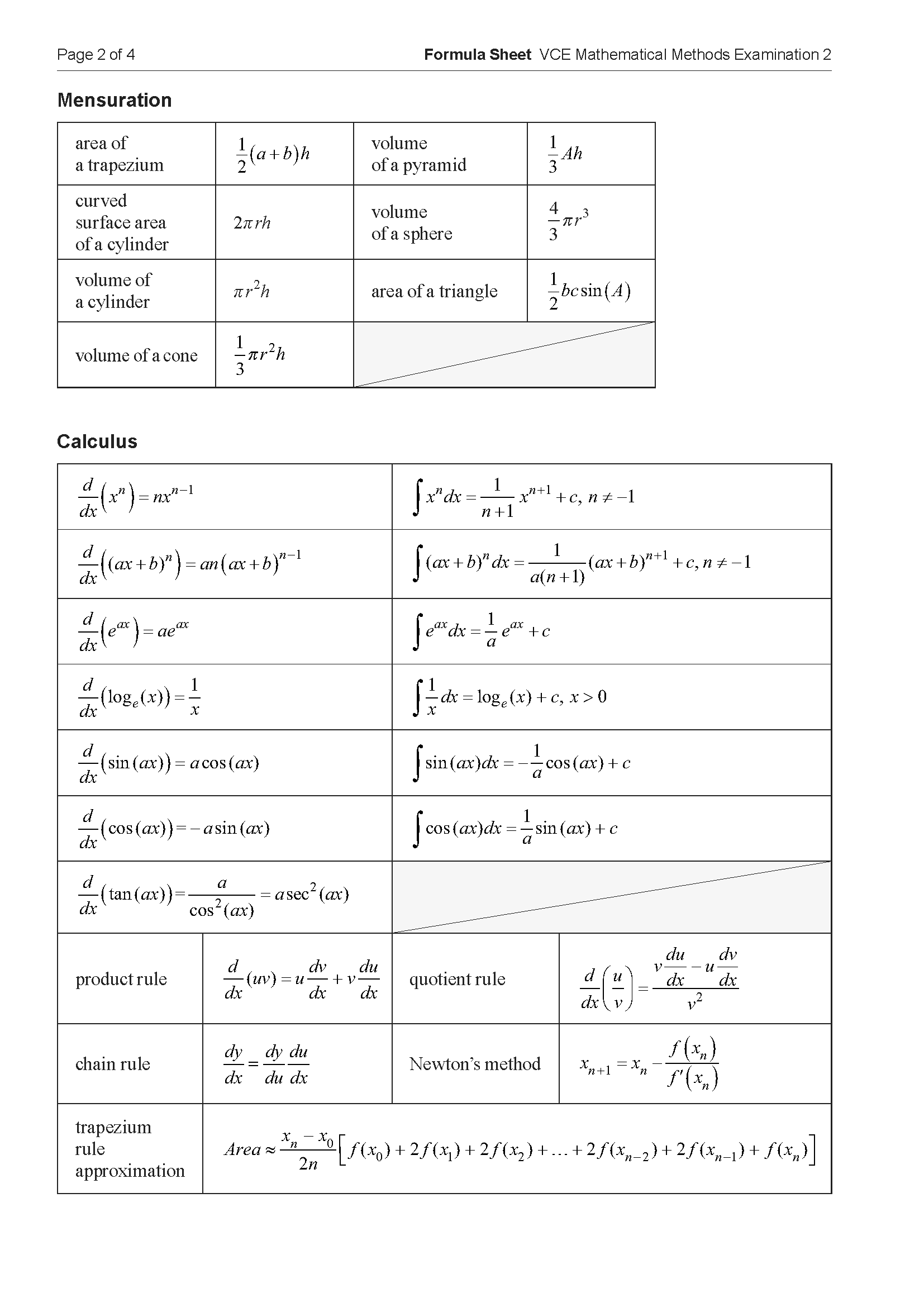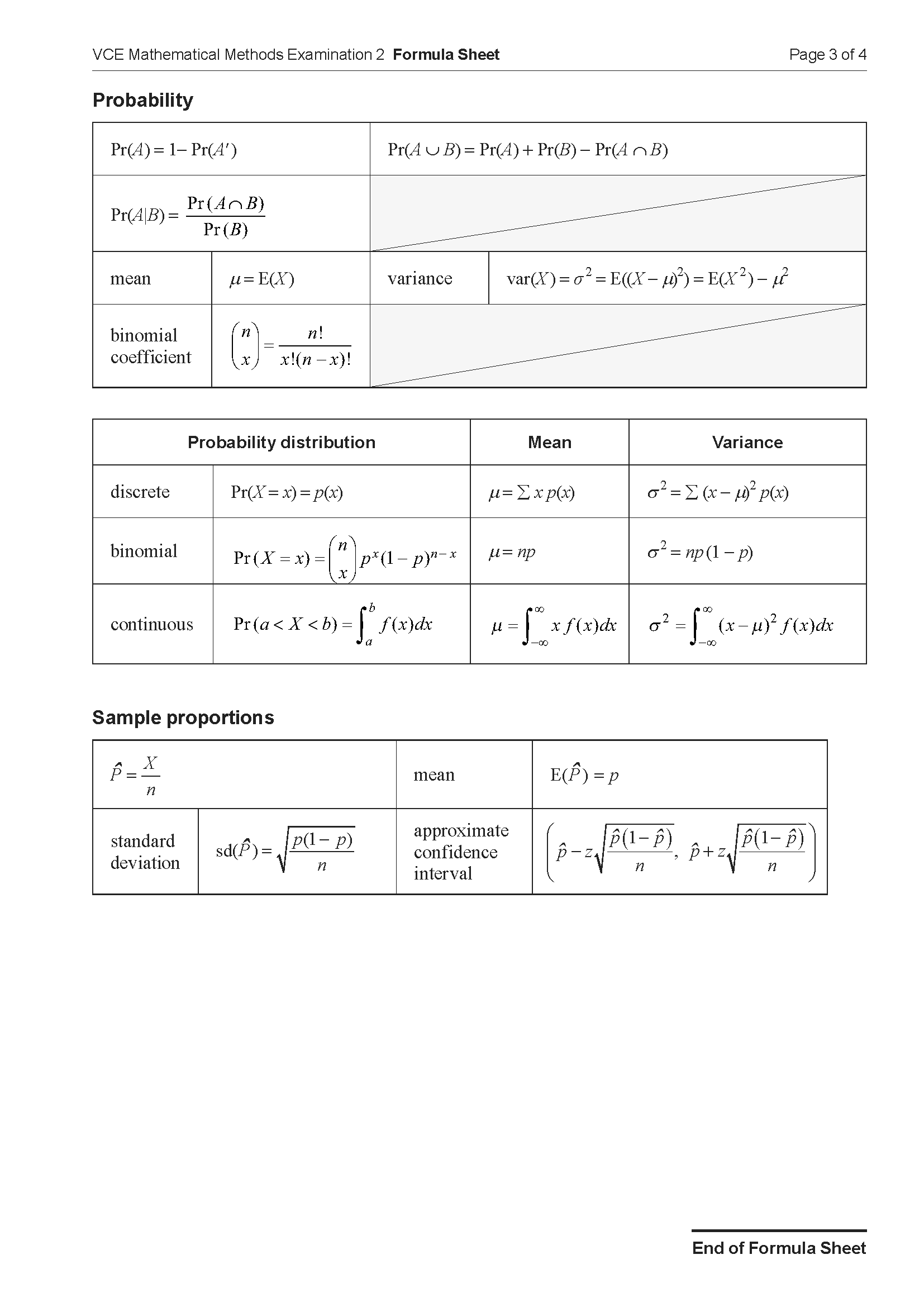VCE Maths Methods Functions Mini Test 8
Number of marks: 10
Reading time: 2 minutes
Writing time: 15 minutes
Section A – Calculator Allowed
Instructions
• Answer all questions in pencil on your Multiple-Choice Answer Sheet.
• Choose the response that is correct for the question.
• A correct answer scores 1; an incorrect answer scores 0.
• Marks will not be deducted for incorrect answers.
• No marks will be given if more than one answer is completed for any question.
• Unless otherwise indicated, the diagrams in this book are not drawn to scale.
Let \(h: (-1, 1) \to R, h(x) = \frac{1}{x-1}\).
Which one of the following statements about \(h\) is not true?
- A. \(h(x)h(-x) = -h(x^2)\)
- B. \(h(x) + h(-x) = 2h(x^2)\)
- C. \(h(x) - h(0) = xh(x)\)
- D. \(h(x) - h(-x) = 2xh(x^2)\)
- E. \((h(x))^2 = h(x^2)\)
The linear function \(f: D \to R, f(x) = 5 - x\) has range \([-4, 5)\).
The domain \(D\) is
- A. \((0, 9]\)
- B. \((0, 1]\)
- C. \([5, -4)\)
- D. \([-9, 0)\)
- E. \([1, 9)\)
Which one of the following is the inverse function of \(g: [3, \infty) \to R, g(x) = \sqrt{2x-6}\)?
- A. \(g^{-1}: [3, \infty) \to R, g^{-1}(x) = \frac{x^2+6}{2}\)
- B. \(g^{-1}: [0, \infty) \to R, g^{-1}(x) = (2x-6)^2\)
- C. \(g^{-1}: [0, \infty) \to R, g^{-1}(x) = \sqrt{\frac{x}{2}+6}\)
- D. \(g^{-1}: [0, \infty) \to R, g^{-1}(x) = \frac{x^2+6}{2}\)
- E. \(g^{-1}: R \to R, g^{-1}(x) = \frac{x^2+6}{2}\)
The function \(f\) has the property \(f(x) - f(y) = (y-x)f(xy)\) for all non-zero real numbers \(x\) and \(y\).
Which one of the following is a possible rule for the function?
- A. \(f(x) = x^2\)
- B. \(f(x) = x^2 + x^4\)
- C. \(f(x) = x\log_e(x)\)
- D. \(f(x) = \frac{1}{x}\)
- E. \(f(x) = \frac{1}{x^2}\)
Consider the following four functional relations.
\( f(x) = f(-x) \quad -f(x) = f(-x) \quad f(x) = -f(x) \quad (f(x))^2 = f(x^2) \)
The number of these functional relations that are satisfied by the function \( f: R \to R, f(x) = x \) is
- A. 0
- B. 1
- C. 2
- D. 3
- E. 4
End of Section A
Section B – No Calculator
Instructions
• Answer all questions in the spaces provided.
• Write your responses in English.
• In questions where a numerical answer is required, an exact value must be given unless otherwise specified.
• In questions where more than one mark is available, appropriate working must be shown.
• Unless otherwise indicated, the diagrams in this book are not drawn to scale.
Let \(f: [0, \infty) \to R, f(x) = \sqrt{x+1}\).
a. State the range of \(f\). 1 mark
b. Let \(g: (-\infty, c] \to R, g(x) = x^2+4x+3\), where \(c < 0\).
i. Find the largest possible value of \(c\) such that the range of \(g\) is a subset of the domain of \(f\). 2 marks
ii. For the value of \(c\) found in part b.i., state the range of \(f(g(x))\). 1 mark
c. Let \(h: R \to R, h(x) = x^2+3\).
State the range of \(f(h(x))\). 1 mark
End of examination questions
VCE is a registered trademark of the VCAA. The VCAA does not endorse or make any warranties regarding this study resource. Past VCE exams and related content can be accessed directly at www.vcaa.vic.edu.au

